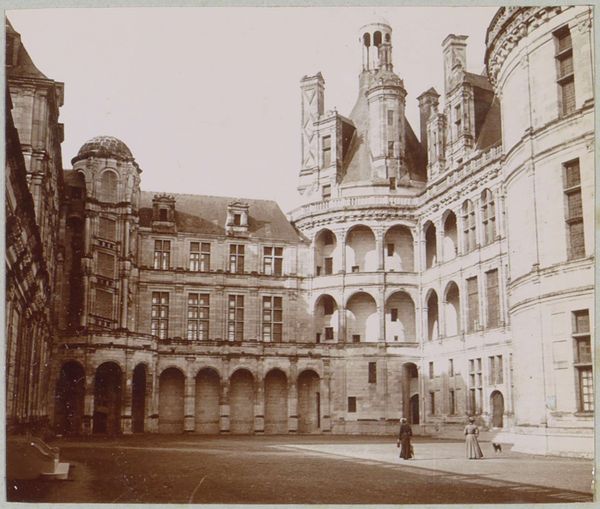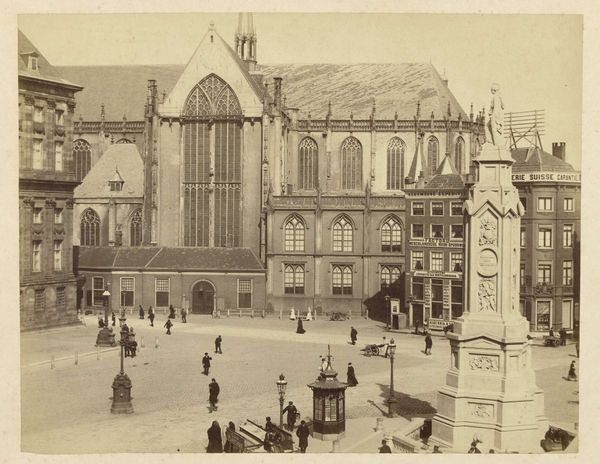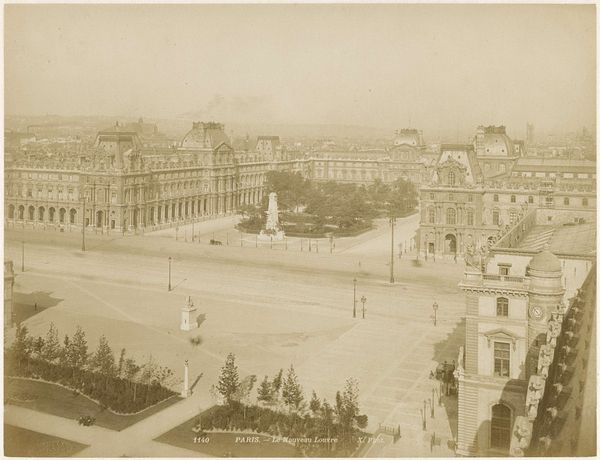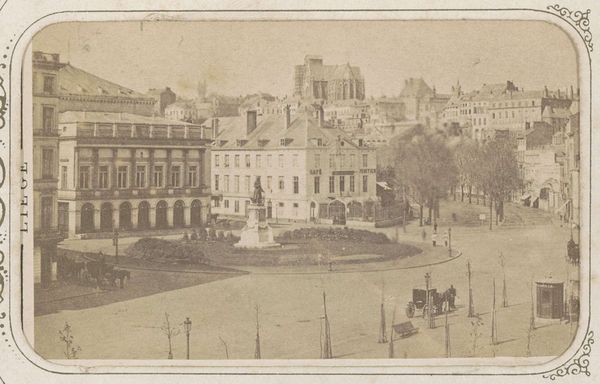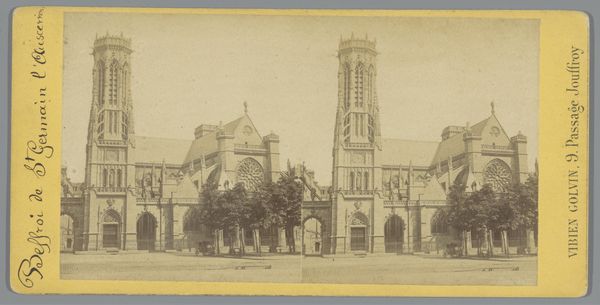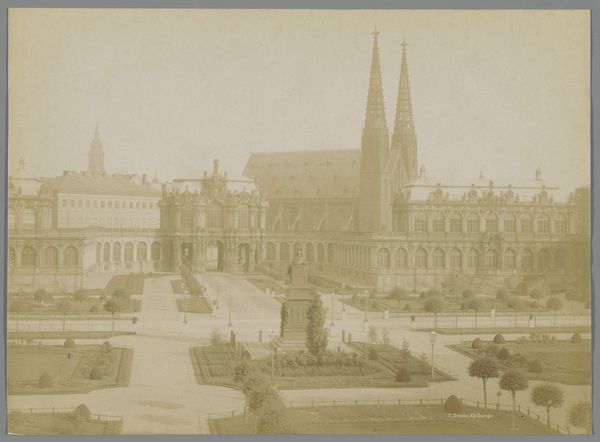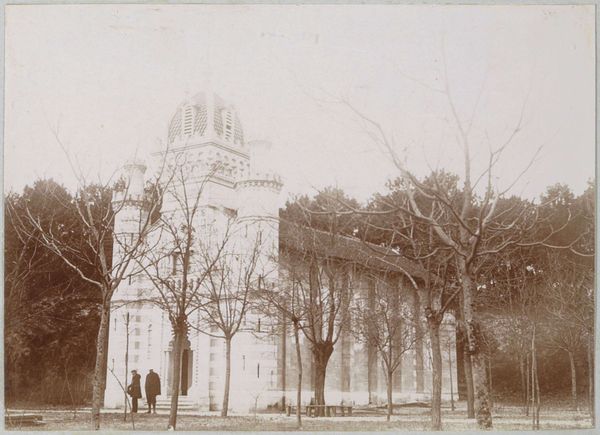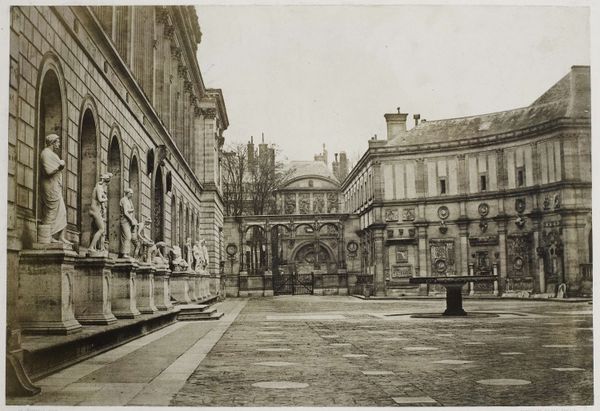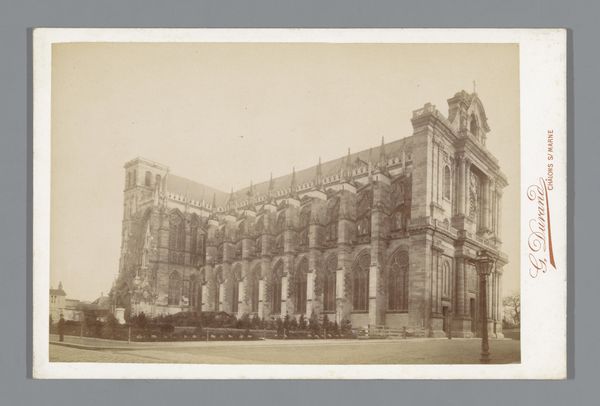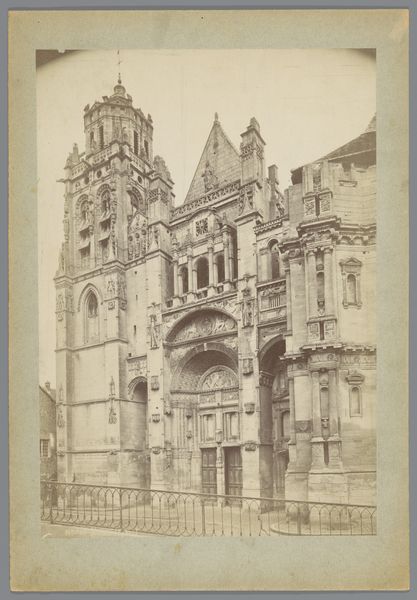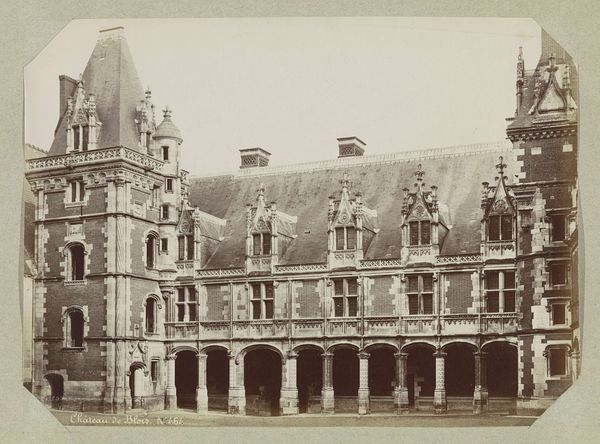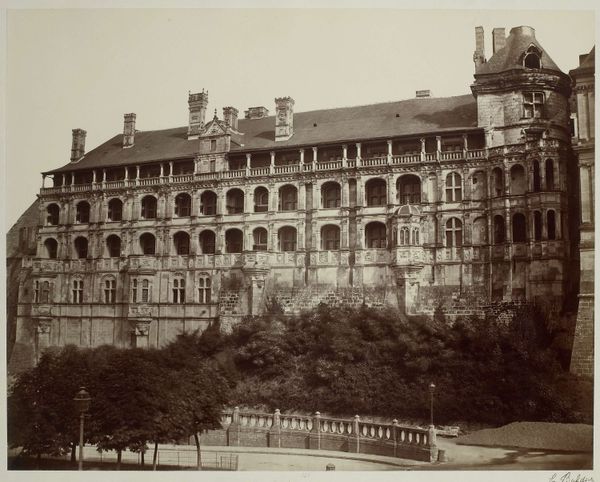
Place du Louvre in Parijs met de Église Saint-Germain-l'Auxerrois c. 1880 - 1900
0:00
0:00
photography, architecture
#
neo-impressionism
#
photography
#
cityscape
#
architecture
Dimensions: height 213 mm, width 271 mm
Copyright: Rijks Museum: Open Domain
Editor: So, here we have Louis Antoine Pamard's "Place du Louvre in Paris with the Église Saint-Germain-l'Auxerrois," a photograph dating from around 1880 to 1900. It’s quite striking, almost like a stage set, but very still and serene. What jumps out at you when you look at it? Curator: It evokes a powerful sense of history, doesn't it? The church of Saint-Germain-l'Auxerrois, fronting the Louvre, was once the parish church of the French royal family. Seeing them together is really meaningful; how would you say that shapes our perception of the image? Editor: I hadn't thought of that. Knowing it was *their* church changes things; makes it feel more… intimate, in a strange way, considering the grand scale of the architecture. I mean, with the tower there front and center. Curator: Precisely. And consider the photographic medium. Photography, especially at this time, had a documentary power, freezing moments and preserving them, yes. But the architecture carries deeper resonance. The pointed arches, the rose window...it’s full of sacred geometry and a tangible connection to cultural memory. Does any of that show how places become characters, or even reliquaries? Editor: So, the architecture isn't just backdrop, it's acting like a memory device? Is that a fair analogy? Like it carries symbolic weight beyond just being old buildings. Curator: Exactly. These places accrue stories. They witness historical dramas, and those events get embedded in the stone, into the very fabric of their construction. The photographer is also capturing that accumulated experience. What remains interesting, even paradoxical, is how it invites modern consumption. Editor: I guess, thinking about it, that’s why the image feels both still and alive; still because it captures a frozen moment, but alive with the weight of everything that has occurred there. Thanks, that was very illuminating. Curator: And for me, that interplay you've noted shows how visual memory extends its impact far into the future.
Comments
No comments
Be the first to comment and join the conversation on the ultimate creative platform.

